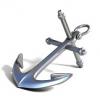Supplies of the Ship Modeler's Handbook are running out. Get your copy NOW before they are gone! Click on photo to order.
×
-
Posts
128 -
Joined
-
Last visited
Reputation Activity
-
 maturin52 reacted to ioanniz in San Ildefonso by ioanniz - OcCre - Scale 1/70
maturin52 reacted to ioanniz in San Ildefonso by ioanniz - OcCre - Scale 1/70
and some photos of the copper plating, i used copper tape and a riveting tool to simulate the copper plates, this weekend i finished one side
-
 maturin52 got a reaction from mtaylor in 74-gun ship by Gaetan Bordeleau - 1:24
maturin52 got a reaction from mtaylor in 74-gun ship by Gaetan Bordeleau - 1:24
Je m'attends, aussi!
-
 maturin52 got a reaction from zoly99sask in 74-gun ship by Gaetan Bordeleau - 1:24
maturin52 got a reaction from zoly99sask in 74-gun ship by Gaetan Bordeleau - 1:24
Je m'attends, aussi!
-
 maturin52 reacted to husky1943 in 74-gun ship by Gaetan Bordeleau - 1:24
maturin52 reacted to husky1943 in 74-gun ship by Gaetan Bordeleau - 1:24
Gaetan,
I, along with everyone else on this website, look forward to another masterpiece. Bon Chance, mon ami!
Ciao for now
Rob
-
 maturin52 got a reaction from AntonyUK in HMS Bounty by maturin52 - Artesania Latina - Scale 1:48
maturin52 got a reaction from AntonyUK in HMS Bounty by maturin52 - Artesania Latina - Scale 1:48
Well, I fell completely off the map. I had some fairly major surgery back in November and spent a couple of weeks in hospital, and a month or more afterwards unable to work on my Bounty project. In the meantime, I had some computer problems, necessitating a hard drive wipe and OS re-install. Fun times! In any case, I'm back with the computer, running Windows 10 and liking it, but have been unable to access this site. (They don't respond to password reset requests.) I have been back at my shipyard, and have actually completed planking the hull and I am currently staining and varnish her. I am not thrilled with the result, but it's good enough for this point in my modelling career. I'll get some pictures posted in the next few days. Back on track!
-
 maturin52 got a reaction from GemmaJF in HMS Bounty by maturin52 - Artesania Latina - Scale 1:48
maturin52 got a reaction from GemmaJF in HMS Bounty by maturin52 - Artesania Latina - Scale 1:48
Although there is still a lot of work to be done, when you get to the point of actually installing the sails, I feel it's getting near the end. I know that many modellers think that rigging a full set of sails is unnecessary and unrealistic. I can't argue with them, they're right. No sailing ship would ever have her full set sails on at the same time. However, I think from an aesthetic point of view, it looks good on a model ship. As Patrick O'Brian said on a caption showing the HMS Surprise with all sails rigged, "HMS Surprise with all her sails hung to dry on a calm day." Here are close ups of the Spanker and the staysails rigged so far.
-
 maturin52 got a reaction from GemmaJF in HMS Bounty by maturin52 - Artesania Latina - Scale 1:48
maturin52 got a reaction from GemmaJF in HMS Bounty by maturin52 - Artesania Latina - Scale 1:48
Well, I guess the end must be in sight. I've been a year and a half working on the Bounty, and I've enjoyed all of it. Atesania Latina's instructions quickly become useless, and a lot has followed... almost all of the rigging... has been the result of research on this forum, broad interpretation of the drawings provided, and, honestly, making stuff up as I go along. Here is a shot of her with the first three sails installed. (That's a roll of paper towels in the background near the mizzen mast )
-
 maturin52 got a reaction from mtaylor in Battle Station by bryanc - FINISHED - Mantua - Scale 1:17 – typical 18th century French carronade
maturin52 got a reaction from mtaylor in Battle Station by bryanc - FINISHED - Mantua - Scale 1:17 – typical 18th century French carronade
The kids are right!! There is absolutely a need for an "AARRRGGGGGHHHH!!" right after the first seagull squawk!
-
 maturin52 got a reaction from thibaultron in Battle Station by bryanc - FINISHED - Mantua - Scale 1:17 – typical 18th century French carronade
maturin52 got a reaction from thibaultron in Battle Station by bryanc - FINISHED - Mantua - Scale 1:17 – typical 18th century French carronade
The kids are right!! There is absolutely a need for an "AARRRGGGGGHHHH!!" right after the first seagull squawk!
-
 maturin52 got a reaction from bryanc in Battle Station by bryanc - FINISHED - Mantua - Scale 1:17 – typical 18th century French carronade
maturin52 got a reaction from bryanc in Battle Station by bryanc - FINISHED - Mantua - Scale 1:17 – typical 18th century French carronade
The kids are right!! There is absolutely a need for an "AARRRGGGGGHHHH!!" right after the first seagull squawk!
-
 maturin52 reacted to bryanc in Battle Station by bryanc - FINISHED - Mantua - Scale 1:17 – typical 18th century French carronade
maturin52 reacted to bryanc in Battle Station by bryanc - FINISHED - Mantua - Scale 1:17 – typical 18th century French carronade
For Christmas my children bought me two of the Mantua “Battle Station” carronade kits (both the French and English versions thereof). They are to a scale of 1:17, so more than fulfil my desire for large scale kits. However it’s difficult to take them as serious “kits”, so I won’t be doing any build logs, I didn’t take any photos whilst constructing the first (here presented, the French one), but think I might do whilst doing the English one, just in case.
However it is worth pointing out that the kits are extremely well produced with the parts as good as any I have come across in any ship kit. Even the manual is well presented, although one gets the feeling it’s not taking itself too seriously as some required dimensions are not listed and one has to make several “best guesses”.
I think the fact the very first item one builds, the decking, gives the user the (completely wrong) impression this kit is not going to be too demanding. The deck comes complete as one piece, with planking joints and treenails already etched into the surface. In a sneering way I found this completely off-putting, but as the kit developed, I quickly realised it wasn’t a complete walk in the park, but some elements were in fact a tad demanding. There is some scope for bashing, but I limited myself to two additional cannon "tools" ; the wormer and rammer. The "sponger" was part of the kit. I should also point out the original cannon was a superb brass one - of considerable weight! However I demand realism (to a point), so the brass had to be rendered gunmetal.
The finished model is actually quite pleasing, and well worth a place amongst the more finished, more self-important, model ships previously built.
-
 maturin52 got a reaction from skifflake in Bluenose II by Heronguy - Billing Boats Nr. 600 - Scale 1:100 - First build
maturin52 got a reaction from skifflake in Bluenose II by Heronguy - Billing Boats Nr. 600 - Scale 1:100 - First build
Interesting kit, Heronguy. I built a Billing Bluenose years ago; it was my first wooden model effort to. I lived in Halifax for many years, have been on Bluenose II many times, and have recently stripped down and restored my Bluenose. I'm now working on an Artesania Latina BOUNTY. Log on this site. I look forward to following your bulid. Good luck, and above all, have fun!
-
 maturin52 got a reaction from EJ_L in Sirene 1775 by Roadking (Vincent) - Corel - Scale 1:75 - French Frigate - First wooden ship build
maturin52 got a reaction from EJ_L in Sirene 1775 by Roadking (Vincent) - Corel - Scale 1:75 - French Frigate - First wooden ship build
The Admiral (my lovely wife) just got me a plank-bender for Christmas. I love it, it's my new best friend - or wil be when I start my next build. HMS Bounty is almost finished - a year and a half in!. Knowing I am considering USS Constitution next, she also got me the Anatomy of the Ship Series edition of the USS Constitution. I guess she's either supportive, or an enabler, depending on your point of view.
-
 maturin52 got a reaction from EJ_L in Sirene 1775 by Roadking (Vincent) - Corel - Scale 1:75 - French Frigate - First wooden ship build
maturin52 got a reaction from EJ_L in Sirene 1775 by Roadking (Vincent) - Corel - Scale 1:75 - French Frigate - First wooden ship build
I have found it is easier to work with shorter pieces of wood, rather than trying to get one piece to work for the entire length. If you think about scale, the full-size ship would never use one plank for the entire width. At 1/50 scale, a ten-inch plank from your kit would equal about 42 feet in the real world. Shorter pieces are easier to fit, and far more forgiving. I have used the long boards in the past and had the same problems. Just a thought.
-
 maturin52 got a reaction from coxswain in Sirene 1775 by Roadking (Vincent) - Corel - Scale 1:75 - French Frigate - First wooden ship build
maturin52 got a reaction from coxswain in Sirene 1775 by Roadking (Vincent) - Corel - Scale 1:75 - French Frigate - First wooden ship build
The Admiral (my lovely wife) just got me a plank-bender for Christmas. I love it, it's my new best friend - or wil be when I start my next build. HMS Bounty is almost finished - a year and a half in!. Knowing I am considering USS Constitution next, she also got me the Anatomy of the Ship Series edition of the USS Constitution. I guess she's either supportive, or an enabler, depending on your point of view.
-
 maturin52 got a reaction from Heronguy in Sirene 1775 by Roadking (Vincent) - Corel - Scale 1:75 - French Frigate - First wooden ship build
maturin52 got a reaction from Heronguy in Sirene 1775 by Roadking (Vincent) - Corel - Scale 1:75 - French Frigate - First wooden ship build
The Admiral (my lovely wife) just got me a plank-bender for Christmas. I love it, it's my new best friend - or wil be when I start my next build. HMS Bounty is almost finished - a year and a half in!. Knowing I am considering USS Constitution next, she also got me the Anatomy of the Ship Series edition of the USS Constitution. I guess she's either supportive, or an enabler, depending on your point of view.
-
 maturin52 reacted to Roadking in Sirene 1775 by Roadking (Vincent) - Corel - Scale 1:75 - French Frigate - First wooden ship build
maturin52 reacted to Roadking in Sirene 1775 by Roadking (Vincent) - Corel - Scale 1:75 - French Frigate - First wooden ship build
Thank you Maturin52. I never thought of it that way but you have a great point. I actually thought it was not good practice to use short pieces, hence my struggle. That tip should certainly help with the remainder of the hull.
I also just learned the correct way to use the heat tool for plank bending. I had the tool but was using it incorrectly all along. Since I learned how to use it, plank bending is a breeze. I will post the video as it may help another newcomer.
-
 maturin52 got a reaction from mtaylor in Sirene 1775 by Roadking (Vincent) - Corel - Scale 1:75 - French Frigate - First wooden ship build
maturin52 got a reaction from mtaylor in Sirene 1775 by Roadking (Vincent) - Corel - Scale 1:75 - French Frigate - First wooden ship build
I have found it is easier to work with shorter pieces of wood, rather than trying to get one piece to work for the entire length. If you think about scale, the full-size ship would never use one plank for the entire width. At 1/50 scale, a ten-inch plank from your kit would equal about 42 feet in the real world. Shorter pieces are easier to fit, and far more forgiving. I have used the long boards in the past and had the same problems. Just a thought.
-
 maturin52 got a reaction from Roadking in Sirene 1775 by Roadking (Vincent) - Corel - Scale 1:75 - French Frigate - First wooden ship build
maturin52 got a reaction from Roadking in Sirene 1775 by Roadking (Vincent) - Corel - Scale 1:75 - French Frigate - First wooden ship build
I have found it is easier to work with shorter pieces of wood, rather than trying to get one piece to work for the entire length. If you think about scale, the full-size ship would never use one plank for the entire width. At 1/50 scale, a ten-inch plank from your kit would equal about 42 feet in the real world. Shorter pieces are easier to fit, and far more forgiving. I have used the long boards in the past and had the same problems. Just a thought.
-
 maturin52 got a reaction from Heronguy in HMS Bounty by maturin52 - Artesania Latina - Scale 1:48
maturin52 got a reaction from Heronguy in HMS Bounty by maturin52 - Artesania Latina - Scale 1:48
Had a few issues editing photos, which I'll put down to my new (semi-crappy) phone. Here are a few more images of my progress to date.
-
 maturin52 reacted to thomaslambo in HMS Bounty by thomaslambo - Artesania Latina – Scale 1:48
maturin52 reacted to thomaslambo in HMS Bounty by thomaslambo - Artesania Latina – Scale 1:48
It's been over 8 weeks since I made a post on the log...so here comes a major update
Main deck planking – and please forgive my lengthy narrative
Before I begin I’d like to thank Chuck and Danny for their inspiring build logs as well as answering a few questions on 18th Century deck planking. Also, thanks to Brian (GuntherMT) and Al (Captain Al) for your help and support
Now that I’m starting the exterior (highly visible areas) of the ship I’m going to try and improve the quality of my build.
As such, I’ve replaced much of the AL kit supplied materials. This includes the main deck and hull planking material, all the walnut material used for the masts and spars including the pre-cut pieces, the rigging ropes/lines, the cannons and carriages, and the stern lanterns.
For starters I purchased Costello Boxwood from Crown Timberyard for the Main Deck. I wanted harder wood and thicker planks to replace the 1mm soft Basswood that came in the kit. This will allow me to better simulate methods used on many 18th century ships.
After some reading and several PM conversations with a few of the experienced builders here at MSW….I ended up constructing what I believe is something close to a typical 18th Century deck.
The deck incorporates a Margin Strake with Scarph joints and commonly used Hook Planks to accommodate the major curves in the Bounty’s deck.
I used hand tools for almost all the work completed, with the exception of the curved Bow planks (used my Proxxon Scroll saw to rough cut the pieces from a Boxwood sheet).
Boxwood materials used: 5mm x 2mm strips used for the standard planks, 7mm to 10mm x 2mm strips used for the Margin, Waterway Filler and Hook Planks, and 2mm x (approx. 4 inch wide) sheets used for the curved bow sections of the Margin and Filler strakes.
Here are the basic steps I took to complete the deck planking along with a few pictures:
Margin and Waterway Filler Strakes;
I began by installing the two outside most strakes, a Waterway Filler strake and the Margin strake. I created cardboard templates for all the sections on both strakes and fitted them to the false deck.
Once I was happy with the template fit I cut the Waterway Filler and Margin strake pieces out of Boxwood strips and sheets.
The Margin strakes have 3 sections on each side (held together with scarph joints), and the Waterway Filler has two planks on each side as it will be covered by a contoured Waterway strake after the deck is completed.
I incorporated Hooked Scarph Joints on the Margin strake as this was standard practice in the 18th Century. I first created hardwood templates for making the scarph joints. This insured both sides of the joints were exactly the same shape. I simply traced the template onto the plank ends and then cut them out with a razor saw and X-acto knive. Then I carefully filed the pieces (using jewelers files) until they had a tight fit.
Once all the pieces were completed and fitted to my satisfaction I glued them in place (Waterway Filler first, then the Margin snugly up against it).
I then laid out a grid pattern on the ply false deck to keep the planks aligned during installation. The Port to Starboard lines are used to align the butt joints for the three shift of butts pattern, and the Bow to Stern lines are used to keep the strakes lined up evenly.
Tools used, Scarph template and rough cut Margin planks with penciled scarph joints ready to be cut out
Margin Planks with Scarph joints cut out and ready for install
Margin and Filler strakes installed
Grid lines drawn in for planking alignment
Hook Plank Cutting and Fitting;
I calculated how many Hook Planks would be needed in the Bow and Stern (4 in the Bow - 2 on each side, and 12 in the Stern – 6 on each side).
I then cut out cardboard templates for each hook plank. Note; only 8 templates were needed to create 16 hook planks as the Port and Starboard planks were very close to the same size.
I used 10mm strips to cut out all the hook planks (using the template traced lines). Once they were fitted to my satisfaction on each side I glued them up.
Tools used, and a couple Hook Plank templates with planks ready for cutting.
Stern Hook Plank Fitting
Bow Hook Plank Fitting
Lay the Planks with #2B Pencil Simulated Tar lines;
I installed the hook and standard planks (24 feet or 6 inches to scale). I used 5mm x 2mm planks and a couple of 6mm and 7mm planks in the center, which is fairly close to scale for about an 8 to 10 inch wide plank.
Note; every single plank laid on the main deck was beveled on at least one edge and many on both edges. This is due to the curvature across the deck from port to starboard, and also to attain a tight fit between the strakes.
Once the planks were cut and filed/sanded to shape I coated both edges with number 2B pencil (a method I saw in Chuck's build log) and then I glued them down with PVA.
Also, I only glue the planks on the bottom (not on the edges)....as it allows the wood to expand and contract as the temperature and humidity changes
Stern Hook Planks
Stern Hook Planks. Note the wider King Plank in the center, I opted not to make it proud (raised) as it would cause issues with all the deck furniture. The two planks on either side are wider as well...similar to Binder Planks but they're placed incorrectly (Binder Planks would be just outside the hatchways with no breaks in the strake other than butt joints).
Scarp Joint in the Margin
Tree Nail Installation;
Prior to laying out the Tree Nails I did some fairly heavy sanding with 120, 150, 200 and 400 grit sandpaper to prepare the deck for tree nail installation and finishing.
I proceeded to carefully lay out the nail pattern on the deck with pencil and a ruler (holding the ruler in place with masking tape). After I was satisfied with the pattern I used a sharp punch to set a very small starter hole for each tree nail. Using a hand pen vice drill I then drilled over 600 holes (with a 0.64mm drill bit).
Final preparation was to remove any residue in the holes and then very slightly reaming the top of the hole with an Awl to clean up any ragged/fuzzy edges at the top of the holes.
Once I was ready to fill the holes I took great care to use as little filler as possible to fill the holes...trying to avoid getting the filler in between the planks.
Then a bit of sanding with 400 grit to remove the excess filler. Followed by a nice rub down with a clean cloth to prepare the surface for the Teak Oil (two coats did the job nicely).
Tools and material used for Tree Nails. The X-acto makes a great putty knife.
Tree Nails Marked
Tree Nail Holes....Drilling begins on over 600 holes (note fuzzy edges on hole rims that need to be removed)
Tree Nail Method Selection;
I spent considerable time testing two different types of tree nail methods; 1) drilled holes filled with wood filler, and 2) bamboo tree nails (using my Byrnes draw plate) stained and pressed into drilled holes.
I went with Chuck’s wood filler approach after testing 8 different colors. I ended up using Elmer’s Golden Oak filler. Reason I choose this method; to me the wood filler approach looks more subtle then the tree nail method….I just like the look better.
Interesting to note that depending on the wood finish you’re using it can have a profound impact on the final color of any given wood filler. I spent hours messing around with several finishes and different wood filler colors until I came up with the color I liked.
I ended up using my personal favorite wood treatment Teak Oil combined with Golden Oak wood filler. Note, I was leaning toward Maple until I used the Teak Oil on the Golden Oak, it darkened it up to exactly what I was looking for.
Boxwood Un-treated (no finish)
Boxwood Treated (with Teak Oil on left and Poly on the right)
Two favorite filler colors (Golden Oak and Maple) finished with Teak Oil
Here is the finished Deck Planking
-
 maturin52 reacted to torro in TITANIC by torro - Mantua - scale 1:200
maturin52 reacted to torro in TITANIC by torro - Mantua - scale 1:200
I am currently buidling the TITANIC, Mantua scale 1:200. This model will be completed with PE-parts, such as windows, railings, ladders and more little stuff. Much information comes from the Titanic Research and Modelling Association,the book " RMS Titanic, a modelmaker's manual" by Peter Davies-Garner and CAD-drawings by Robert Hahn.
Here some pictures of what has been done so far :
fixing the frames and start with planking the hull :
funnels with the rivet-pattern :
lifeboats with PE-davits
Eric
-
 maturin52 got a reaction from JPAM in Bluenose II by Heronguy - Billing Boats Nr. 600 - Scale 1:100 - First build
maturin52 got a reaction from JPAM in Bluenose II by Heronguy - Billing Boats Nr. 600 - Scale 1:100 - First build
MY attempt at planking the Bluenose (also my first build, some years ago) resulted in sanding down a lot of filler putty and painting the whole thing. It worked out well. JPAM, as a Canadian exPatriot living in the US, I too had Poutine withdrawal. In the St Louis area, there's a local cheese called Provel that substitutes very nicely, and large curd cottage cheese works well, too. Bon Apetit!
-
 maturin52 got a reaction from cobra1951 in HMS Bounty by maturin52 - Artesania Latina - Scale 1:48
maturin52 got a reaction from cobra1951 in HMS Bounty by maturin52 - Artesania Latina - Scale 1:48
and finally, for now, the very first of the yards. As shown in previous pictures, I've built all of the yards and booms, chains, and studs. They'll be slung and rigged as specified in the less-than-complete instructions...
-
 maturin52 reacted to Mike Dowling in King of the Mississippi by rcmdrvr - FINISHED - Artensania Latina
maturin52 reacted to Mike Dowling in King of the Mississippi by rcmdrvr - FINISHED - Artensania Latina
Absolutely lovely, a tribute to your building skills. I might buy this beasty and have a go after all.














